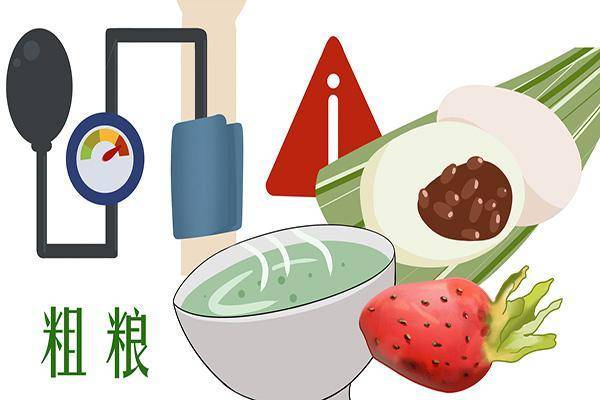The population of people with diabetes is increasing, and it is starting to trend towards younger individuals. Previously, only middle-aged and elderly people were concerned about this issue, but now everyone has to worry about it. A slight oversight could lead to problems knocking on the door. After encountering issues, the primary focus is on blood sugar control, trying to prevent blood sugar from rising. Once blood sugar is out of control, it can lead to many complications for the body. Therefore, diabetic individuals are really racking their brains, constantly seeking good methods for blood sugar control. Upon hearing that consuming coarse grains can regulate blood sugar, they started incorporating coarse grains into every meal, but after a period of time, no changes were observed; instead, blood sugar levels increased. What could be the reason for this?
Where does the problem lie?
Coarse grains contain insoluble fiber and many essential nutrients, making them less digestible once inside the body. This delays the absorption of glucose, hence aiding in blood sugar regulation. However, some people make mistakes in selecting coarse grains. They are unaware of which coarse grains are suitable for blood sugar control, assuming that any coarse grain will do. There are many types of coarse grains, each impacting blood sugar differently. Choosing the wrong coarse grain can lead to elevated blood sugar levels. For instance, oats, black rice, and barley do not have a significant impact on blood sugar; prolonged consumption in large quantities may be of little use and could even result in spikes in blood sugar levels.
Although coarse grains can help regulate blood sugar, suitability varies among individuals. Each person’s body condition is unique, and the impact varies based on individual circumstances. People deficient in calcium and iron elements, consuming excessive coarse grains, may lead to the deposition of food fibers in the body, reducing mineral absorption. Additionally, individuals with weak digestion may burden their gastrointestinal system by consuming too many coarse grains, causing damage and preventing stable blood sugar levels.
Regulating blood sugar does not solely rely on eating coarse grains excessively at every meal; this could be detrimental in the long run, leading to malnutrition and hindering blood sugar control. It is essential to have a balanced mix of foods to better regulate blood sugar. Just like balancing between meat and vegetables in meals, diversification is key; excessively focusing on one type of food can cause fluctuations in blood sugar levels. If you fall into this category, it is advisable to correct this promptly.
If you wish to consume coarse grains to effectively regulate blood sugar, it is recommended to drink an adequate amount of water while consuming coarse grains. Water helps dissolve the fiber in coarse grains, making them easier for the body to digest. Drinking a moderate amount of water while eating is sufficient; if every meal consists of coarse grains without drinking enough water, it may be challenging for the body to digest the coarse grains, causing burdens and hindering blood sugar control. Remember to drink water regularly throughout the day, rather than consuming a large amount all at once, for better fiber dissolution.
While using coarse grains to regulate blood sugar, have you noticed the above-mentioned issues? If you have overlooked them as well, it’s not too late to make corrections now. Learning the correct way to consume coarse grains is essential for better blood sugar control. Apart from dietary adjustments, there are other aspects in life to consider, such as engaging in appropriate physical exercise, which helps improve blood circulation and body metabolism, thus aiding in stabilizing blood sugar levels. Additionally, ensuring an adequate amount of sleep, avoiding staying up late, and cultivating a habit of going to bed and waking up early are also essential.


